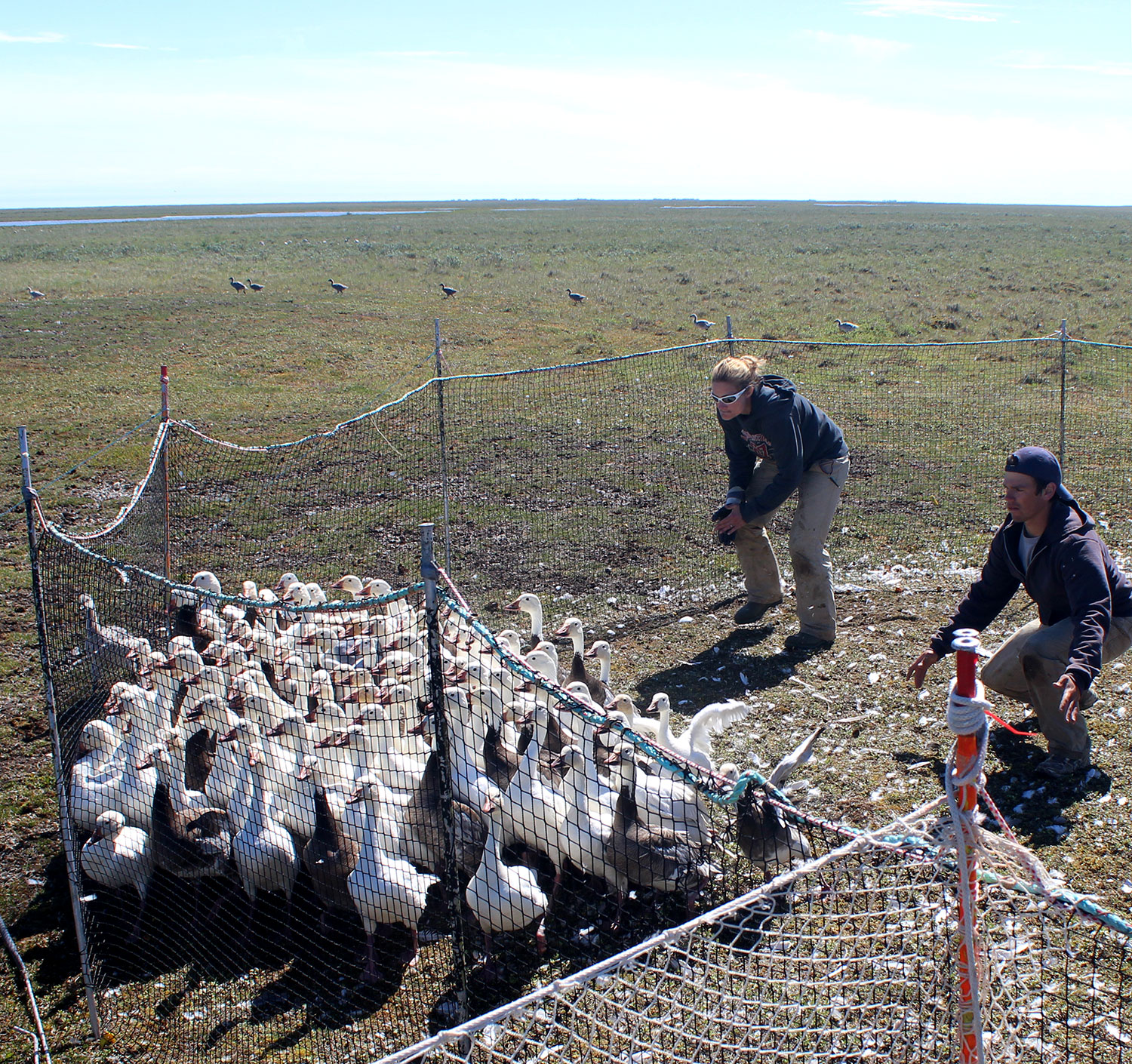Arctic nesting geese have always been a focal point of CFC management; however, as mid-continent light goose populations grew, so did awareness of damage to their tundra breeding habitats. Leading into the turn of the Century, managers worked aggressively to not only increase harvest of the birds, but also to understand the impacts of harvest on light goose populations through banding programs and other breeding surveys. Literally hundreds of publications have resulted from the two on-going projects listed below.
Hudson Bay Project

The Hudson Bay Project (formerly known as the LaPerouse Bay Project) began in 1968 as an effort to understand nesting ecology of snow geese near LaPerouse Bay, Manitoba. The project soon evolved to learn more about effects of snow geese on their arctic ecosystems and other aspects of snow goose population ecology. The project was later expanded to encompass more of the low-arctic habitat along western Hudson Bay to better understand the effects of large numbers of snow geese not only breeding in the area, but also migrating through and staging during fall and spring. The impacts of intensive foraging and overuse by snow geese has led to far-reaching trophic cascades in an environment that is slow to recover. Overall, the project studies the ecosystem as a whole, examining the interactions of biotic and abiotic factors. Virtually all aspects of the ecosystem are studied from soil and vegetative health to snow geese and polar bear population dynamics and foraging principles. The CFC has been a cooperating funding agent on the Hudson Bay Project since 1981. As it stands today, the Hudson Bay Project is the longest running Central Flyway funding commitment.
Karrak Lake Project
Since 1991, the Karrak Lake project has been providing information pertinent to the management of mid-continent light geese (both snow and Ross’s geese). Located within the Queen Maud Gulf Bird Sanctuary, Nunavut, the Karrak Lake colony is unique in that it has over a million nesting geese and a high proportion are Ross’s geese. In fact, approximately 90-95% of Ross’s geese are believed to nest in the Queen Maud region. This research station provides excellent banding representation of arctic nesting geese in the high arctic, particularly mid-continent light geese. Tundra habitat monitoring along with studying the effects of light geese on vegetative communities, and other waterfowl ecology studies also take place at Karrak Lake. The CFC has been a cooperating funding agent on the Karrak Lake Project since 2003.

Locations of the Hudson Bay Project (star) and the Karrak Lake Project (triangle)